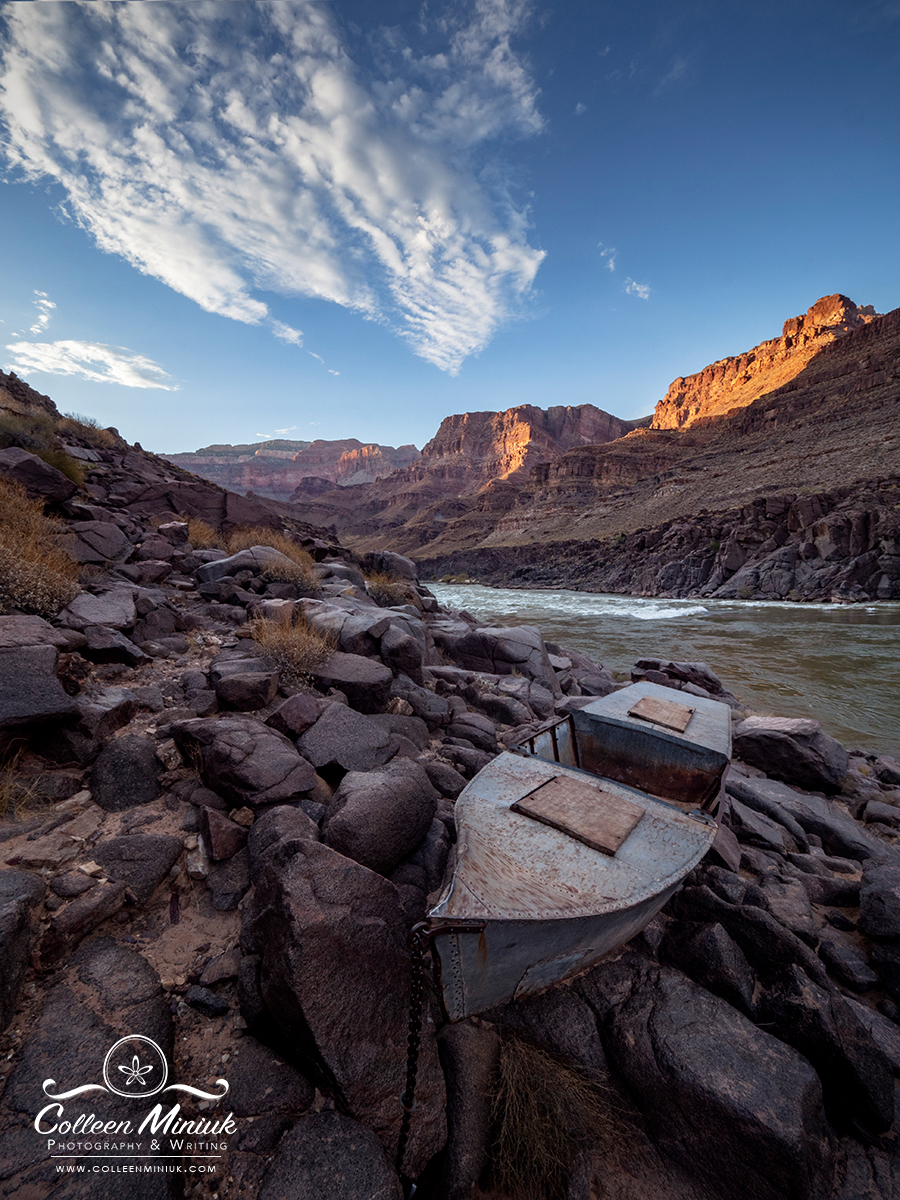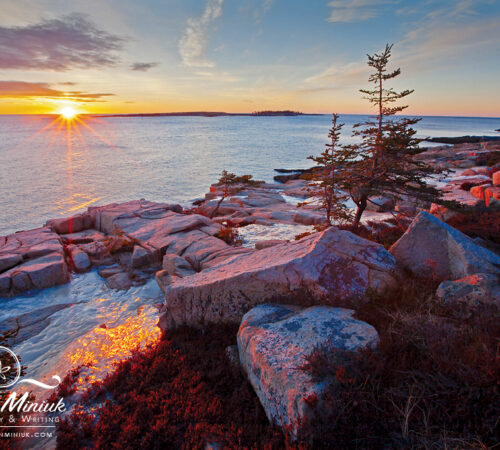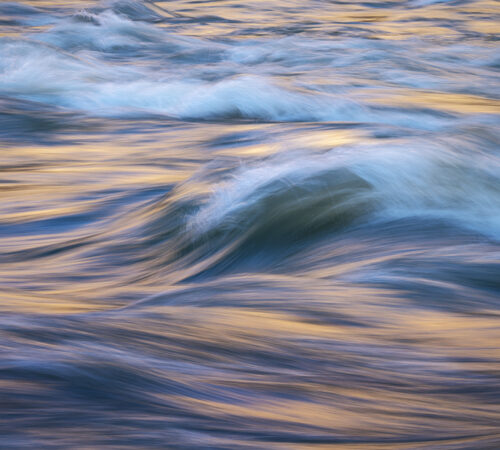If No One Saw Your Photos

Dear Bubbles:
I just finished watching the “Finding Vivian Maier” documentary per your recommendation. Very good. But now I’m wondering, if no one ever saw YOUR photographs, would you still photograph?
~Sam
Dear Sam:
Wasn’t that a fun story? For those who haven’t seen it yet, some background:
The film shares how a man named John Maloof visited a Chicago-based auction house in 2007 in search of vintage photographs to support one of his book projects. There, he “…found a box of negatives depicting Chicago in the 60s. Unable to get a thorough look at its contents, he took a gamble and purchased the box for around $400.” He learned the box—and likely the negatives inside—had belonged to a woman named Vivian Maier. A quick online search for her revealed no leads. Maloof happened to repeat the search two years later, this time finding her obituary.
Maier was born in New York but spent much of her childhood in France. In 1951, she returned to New York City, then moved to Chicago to work as a nanny for well-to-do families. For 40 years, Maier wandered the city streets alone or with the children she looked after. In 2007, she fell behind in rent payments for her storage unit, so she auctioned off some of her belongings. She died alone in a nursing home in Chicago in 2009.
Maloof reached out to her family members and friends to try to piece together the puzzle of her mysterious life. The people who knew her described her as always having a Twin Lens Rollieflex camera dangling around her neck. They spoke of her roaming the stockyards, allies, and shops in and around the city. Some remember her stopping to make photographs. But no one, save for a photography shop in a small remote village in France, ever saw the results. Unbeknownst to her family and close friends, even the families for whom she worked, Maier had amassed an archive of over 150,000 photographs—not to mention piles and piles of undeveloped rolls of film—throughout her life.
Maloof has since dedicated much of his life to showing Maier’s work through the documentary film, exhibitions, books, and prints. What we’ve now seen is extraordinary. Some experts believe Maier’s collection represents some of the best street photography in history.
So why didn’t she show anybody her work when she created it? If she never intended anyone to see her work, why did she photograph in the first place? Or as one of her acquaintances asked in the film, “What’s the point of taking [a photograph] if no one sees it.” The film triggered more questions than answers for me, including the very question you asked, “If no one saw my photographs, would I still photograph?”
Let’s say I decided to withdraw all of my images from public view (or after reading last week’s post, you all decided to pursue photographic celibacy), would I still photograph? Yes. But I can’t say that’s always been the case…
I took up photography as a hobby in 2001 to help escape the burdens of my corporate America job. I had never picked up a camera before my first class at the local community college (unless you count the cheap disposable ones you took with you on family vacations). From the moment I smelled the fixer in the black-and-white darkroom, though. I was hooked. I hadn’t spent much time in the outdoors previously, but I found myself seeking solace in wild landscapes in almost all of my free time with my 35mm camera in hand. This comforted my introverted soul. (Yes, I’m an introvert.)
As I wandered around outside, I appreciated how photography gave me a way to communicate what I saw, experienced, and felt in my outdoor adventures without using words. For much of my life (and this is still true to some, but a much lesser, degree today), I have also felt embarrassed by my limited vocabulary and thus have avoided social situations, especially with strangers or acquaintances, where I risked saying the wrong thing and being misunderstood despite my best intentions. I quickly learned that photography allowed me to forget all that. It enabled me to produce a tangible object I could show to others and say in a universal language without words, “Look here! Isn’t this pretty!”
Early on in my photo career, as I tried to sell my work, I made images I thought other people, especially art show attendees, magazine editors, and calendar publishers would like. The external feedback directed my work to mostly iconic locations across the Western United States, where I made sexy, eye-catching compositions complete with colorful skies, sunbursts, and the Milky Way. Getting paid for my photographs was initially how I gauged my success. I photographed specifically to be seen and compensated. I was (and still am) grateful for the support and encouragement, but it bored me to tears. I didn’t like many of my photographs, even though I made enough money with my photographs to quit my corporate job and become a full-time freelancer in 2007.
Moving away from 35mm, medium format, and large format film cameras and into digital technology in the late 2000s gave me more freedom to test out creative ideas more frequently…and at a cheaper price. Unlike the film days, I received immediate feedback on my “what if I did this…” experiments. In taking greater risks, I made an impressive amount of really horrible images—and that was OK, even necessary, to facilitate creative growth. Digital cameras gave me (us) the ability to choose which images stayed on my (our) memory card—and which ones needed to be destroyed from existence immediately. Boy, was I sure glad the camera manufacturers put a Delete button on the back of their digital cameras.
Through a cycle of experimentation and analysis, I eventually started making unique images I was proud to call my own, images that said, “This is who I am, and as weird and silly as it may be (ahem…BUBBLES!!!!), this is how I connect with the natural world. This is what is important to me.” To do so, I had to learn to become more aware of my surroundings through mindfulness and pay closer attention to what I responded to—and why. Because of photography, I became more observant in all aspects of my life. So even if no one saw my photographs, photography has made me—and continues to make me—a better human being. As Dorothea Lange said, “The camera is an instrument that teaches people how to see without a camera.”
Now, I rarely go to a location simply to take pictures. I venture outside to hike, paddle, camp, to enjoy the adventure, to experience something new. The camera just comes along with me for the ride and to tell my story. When, and only when, I feel emotionally moved by a scene or a subject will I make an image. When I do, I click the shutter to record for myself the moments that mattered to me. The moments when I experienced a heightened awareness, connectedness, and awe; the moments where I somehow made order out of chaos; the moments when lightness and darkness worked together in harmony. Photographs have become a part of my memory, an extension of my existence. I photograph simply to be me, the only me I know how to be, in some unforgettable time and place with nature. It makes me feel fulfilled and alive.
During a conversation some years ago, my friend and fellow photographer Guy Tal and I came to agree—after some excellent banter—that much of the value of a photograph has already been achieved once you press the shutter and process your vision. What the photograph does “out there” in the world is not only beyond our control in most cases, but it’s also just the whipped cream on top of a very large piece of strawberry pie. It’s the process of photographing, not the photographs then, that enrich my life.
You have to wonder at some point, who set the expectation that we have to show our photographs to the outside world once we’ve created them anyhow? And why?
Given the inundation of images we are bombarded with through social media, advertisements, magazines, and other outlets, it’s difficult to imagine what the world would look like if no one shared their images. In fact, would we even know that photography exists? The first images made with a camera had to be shared in order to show the world what could be done with the medium. Historically, photographs on display have been used to document significant personal and societal events, influence political causes, promote products and ideas, protect wild places, showcase beauty, and so much more. Even today, we learn so much about our lives, our surroundings, and the happenings of our world through photographs. We learn about each other. How each of us interpret our own realities. How others make order out of chaos. How others respond to the light and shadows.
Just for fun, I calculated the percentage of images I share publicly via my website, social media, blog, presentations, workshops, publications, and any other means of public consumption over the past few years. Turns out, I share about 2-3% of the images I make.
At that rate, it’s clear I no longer photograph to be seen. I still share photographs to gain compensation, but photography and its associated threads are how I make my living. I have to eat. That doesn’t mean I sell my soul to sell my work, though. I don’t and won’t.
I share (a small sliver of ) my work to the public, but not because I have to. I want to. When I share my photographs, I hope they give my family and friends a glimpse into the life I lead and the things I’ve been so fortunate to experience during my journey on Earth. I want to provide a glimpse into places some may never have the chance to see. I hope my images convince just one person to put down the bag of Doritos, get off the couch, and go outside. I hope my images communicate that there’s more to life than sitting in an office cube, reading about messy political scandals, and answering emails. That there’s a real world out there, one that’s different from the manufactured one, and it’s worth seeing, respecting, and preserving. I hope my pictures somehow inspire you to find your own way to your own beauty and your own connections with nature—with or without a camera. I believe in a photograph’s ability to influence people’s behaviors and decisions. If I can make a small dent in one person’s life, I’ll feel like I’ve done my job as a photographer (and fulfilled my life’s purpose).
Putting your work in front of your community puts your ego at risk, though, right? Sharing opens us up to external feedback and expectations that can influence our work (positively and negatively). I used to hear voices in my head ask, “Are these good enough to show anyone? Will anyone understand them? What if no one likes them or buys them?” Over time, as my confidence in my technique and abilities increased, a different, even stronger voice responded to these questions: “Why do I care?”
I don’t anymore. Visiting wild places like the coastline in Acadia National Park, the inner gorge of the Grand Canyon, or an unnamed mountain peak in the desert near my home serve as a perfect reminder that nature holds no expectations of you, of me. The granite, rapids, and rattlesnakes couldn’t care less if you or I photograph them, let alone photograph anything at all. The camera doesn’t care either.
So who does? In short, not many. Few, if any people, truly care if you make an image. Ever. I don’t suggest that to be demoralizing. I mean it to be freeing. The fear of performing and social acceptance are merely figments of our imagination (reinforced by a lot of media influences…). That anxiety won’t go away until we tell it to. So if you need to tell it to go away now, go ahead. I’ll wait.
Besides, as Eleanor Roosevelt said, “What other people think of me is none of my business.” What other people think of my photography is also none of my business. I absolutely appreciate positive reinforcement and constructive critiques in the name of continuous improvement, but ultimately I’m the only person I need to satisfy.
Obviously Vivian Maier didn’t care what other people thought of her work. Imagine the freedom she felt! No one expected her to make a photograph, let alone a good one. Her images were not tainted by outside expectations or a need for acceptance, fame, or fortune.
We will never know why Maier did what she did (unless someone finds a diary of extensive notes at another auction some day), but it’s clear she photographed her life because it mattered to her. That alone was reason enough to photograph. It’s enough for me to photograph, too.
Think about your own motivations for a minute. Why do you photograph? What do you hope to achieve by sharing your photographs, if you share?
As you answer, consider this: Who else can tell your story through your eyes? Your life is colorful, rich with detail, bizarre, sometimes wild, and most importantly, unique. You are the only one who experiences life the way you do—whether you ever record or share a single pixel of it. Photograph for the most important reason of them all: because your life matters to you.
Be well, be wild,
Bubbles
——————————————————-
Have a question about photography, art, and/or the creative life? Need some advice? Send your question to Dear Bubbles at colleen@colleenminiuk.com to be possibly featured in a future column post. (If you’d prefer a different display name than your real first name, please include your preferred nickname in your note.)





One Comment
John O'Shaughnessy
Hi Colleen,
I really enjoyed this post because it really speaks to me as a person and a photographer.
Answering the question of why I make images is something I didn’t realize until I actually
started doing it as more than just taking snapshots. I keep doing it because when I’m making
photos, most everything else in my life is forgotten. It is just me, the camera and God’s wonderful
creation. And it is marvelous!
Very few people see my images and the ego in me is not happy with that, but that’s the way it is.
And that is something that I struggle with, but even if no one ever saw them, I would still photograph.
By the way, you may remember me as the guy who traveled around Arizona with you looking for subjects
to photograph and good Mexican food.
Regards,
John